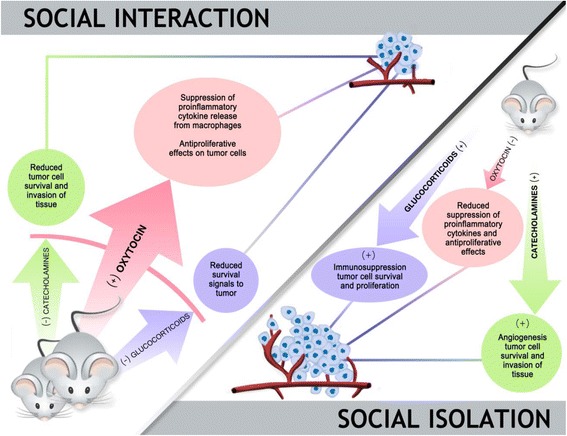Fig. 3.

Social environment alters an animal’s hormonal milieu in a way that could either promote or suppress tumor development. Socially isolated rodents are prone to increased hypothalamic-pituitary-adrenal (HPA) axis and autonomic nervous system (ANS) activity, characterized by increased endogenous concentrations of corticosterone, adrenaline, and noradrenaline. These hormones have been shown in vivo and in vitro to promote tumor growth through a variety of well-described tumor-associated pathways. In contrast, central nervous system (CNS) oxytocin is relatively low among socially isolated animals. Among socially integrated animals there is increased release of CNS oxytocin, which in turn restrains both the HPA axis and ANS. In addition, oxytocin may indirectly influence tumor development via its modulation of macrophages
